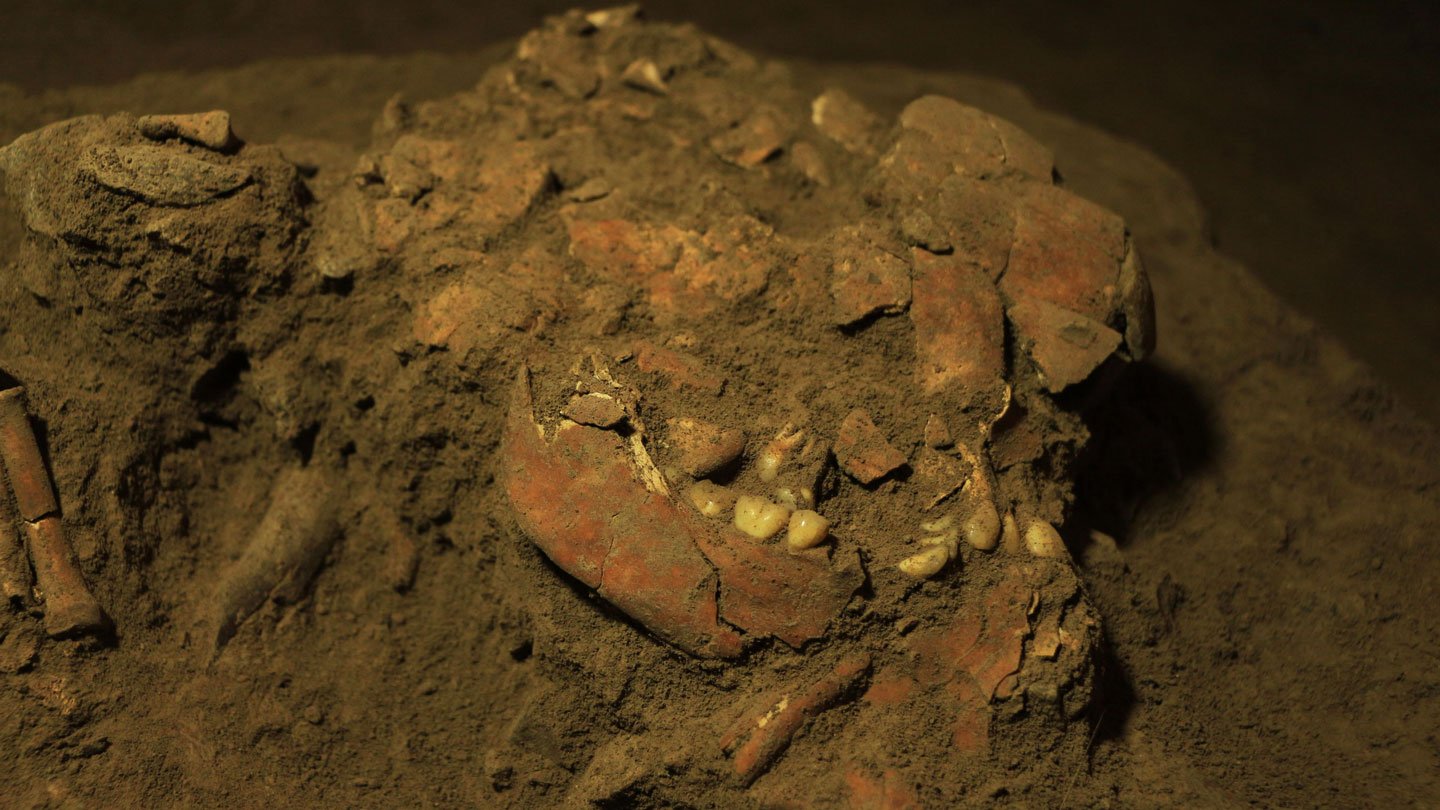A younger lady who lived on the Indonesian island of Sulawesi as early as round 7,300 years in the past had a surprisingly historic East Asian pedigree, blended with a touch of Denisovan ancestry, a brand new research finds.
Researchers excavated the girl’s partial skeleton from South Sulawesi’s Leang Panninge cave. An evaluation of her DNA reveals that she was a descendent of primarily East Asian Homo sapiens who in all probability reached the tropical outpost at the very least 50,000 years in the past, researchers report August 25 in Nature.
Till now, many scientists thought that expert mariners and farmers referred to as Austronesians first unfold East Asian genes via Wallacea, a bunch of islands between mainland Asia and Australia that features Sulawesi, Lombok and Flores, round 3,500 years in the past.
The traditional Sulawesi lady’s DNA “offers the primary indication that an Asian ancestry was current in Wallacea lengthy earlier than the Austronesian growth,” says archaeologist Adam Brumm of Griffith College in Brisbane, Australia.
Indonesian archaeologists who unearthed the skeleton — and who coauthored the brand new research with Brumm, inhabitants geneticist Selina Carlhoff of the Max Planck Institute for the Science of Human Historical past in Jena, Germany, and different colleagues — nicknamed the younger lady, who was 17 or 18 years outdated when she died, Besse (pronounced BESS-eh). In ethnic communities of South Sulawesi, Besse is an affectionate time period for particular person women and girls.
Researchers work on the entrance to Sulawesi’s Leang Panninge cave. Historic DNA was extracted from a hunter-gatherer’s skeleton excavated contained in the cave.Leang Panninge analysis group
After arriving on Sulawesi, the girl’s ancestors mated with Denisovans who already inhabited the island, the investigators suspect. Identified primarily from historic DNA samples, Denisovans are a bunch of mysterious historic hominids who date to as early as round 300,000 years in the past in Siberia and survived on close by Papua New Guinea till as late as 30,000 to fifteen,000 years in the past (SN: 3/29/19).
The invention of Besse reveals that the peopling of Southeast Asian islands was rather more advanced than has usually been appreciated, says inhabitants geneticist Lluis Quintana-Murci of Collége de France and the Pasteur Institute, each in Paris. “Wallacea was in all probability a key habitat area for Denisovan-related teams,” provides Quintana-Murci, who didn’t take part within the new research.
The researchers estimate that the traditional Sulawesi lady inherited about 2.2 % of her DNA from Denisovans. That’s a bit lower than another teams within the area. Indigenous teams within the Philippines carry the best identified ranges of Denisovan ancestry, topping out at about 5 % (SN: 8/12/21).
Earlier genetic proof steered that completely different Denisovan populations interbred with H. sapiens teams within the Philippines and on a land mass that included what’s now Papua New Guinea and Australia. The Sulawesi lady’s DNA signifies that interbreeding occurred in Wallacea as some Stone Age H. sapiens made their manner towards Papua New Guinea and Australia. “The key gene circulation from Denisovans into ancestors of Papuans and Aboriginal Australians more than likely occurred as soon as [H. sapiens] reached the Wallacea islands,” says inhabitants geneticist and research coauthor Cosimo Posth of the College of Tübingen in Germany.

Signal Up For the Newest from Science Information
Headlines and summaries of the most recent Science Information articles, delivered to your inbox
The lady’s DNA extra intently resembles that of present-day Papuans and Indigenous Australians than of any present mainland East Asians, the scientists say. These comparisons point out that she belonged to a beforehand unknown, distinct genetic line of people that emerged round 37,000 years in the past, roughly the identical time as a beforehand estimated evolutionary break up of Papuans from Indigenous Australians.
Fastidiously crafted stone factors that had been positioned within the historic lady’s grave establish her as a member of South Sulawesi’s Toalean hunter-gatherer individuals, Brumm says. Toalean stone artifacts date to between roughly 8,000 and 1,500 years in the past. Proof of Toalean tradition disappears after that.
The Indonesian coauthors of the brand new research excavated the traditional lady’s partial skeleton from 2015 to 2019. Surviving fossils primarily got here from the cranium and pelvis. DNA was extracted from a dense bone within the base of the cranium that’s identified to protect genetic materials particularly properly. Fossils in tropical climates like Indonesia’s hardly ever yield historic DNA as a result of the delicate genetic materials doesn’t usually survive these circumstances.
Radiocarbon courting of a burned seed from a typical Southeast Asian tree, which was discovered close to the skeleton, supplied an age estimate of between round 7,300 and seven,200 years.
It’s not identified if ancestors of Besse created beforehand found Sulawesi rock artwork of a pig that dates to at the very least 45,500 years in the past, one of many oldest identified inventive depictions of a real-world organism (SN: 1/13/21). So the artists of that work stay a thriller, for now.



